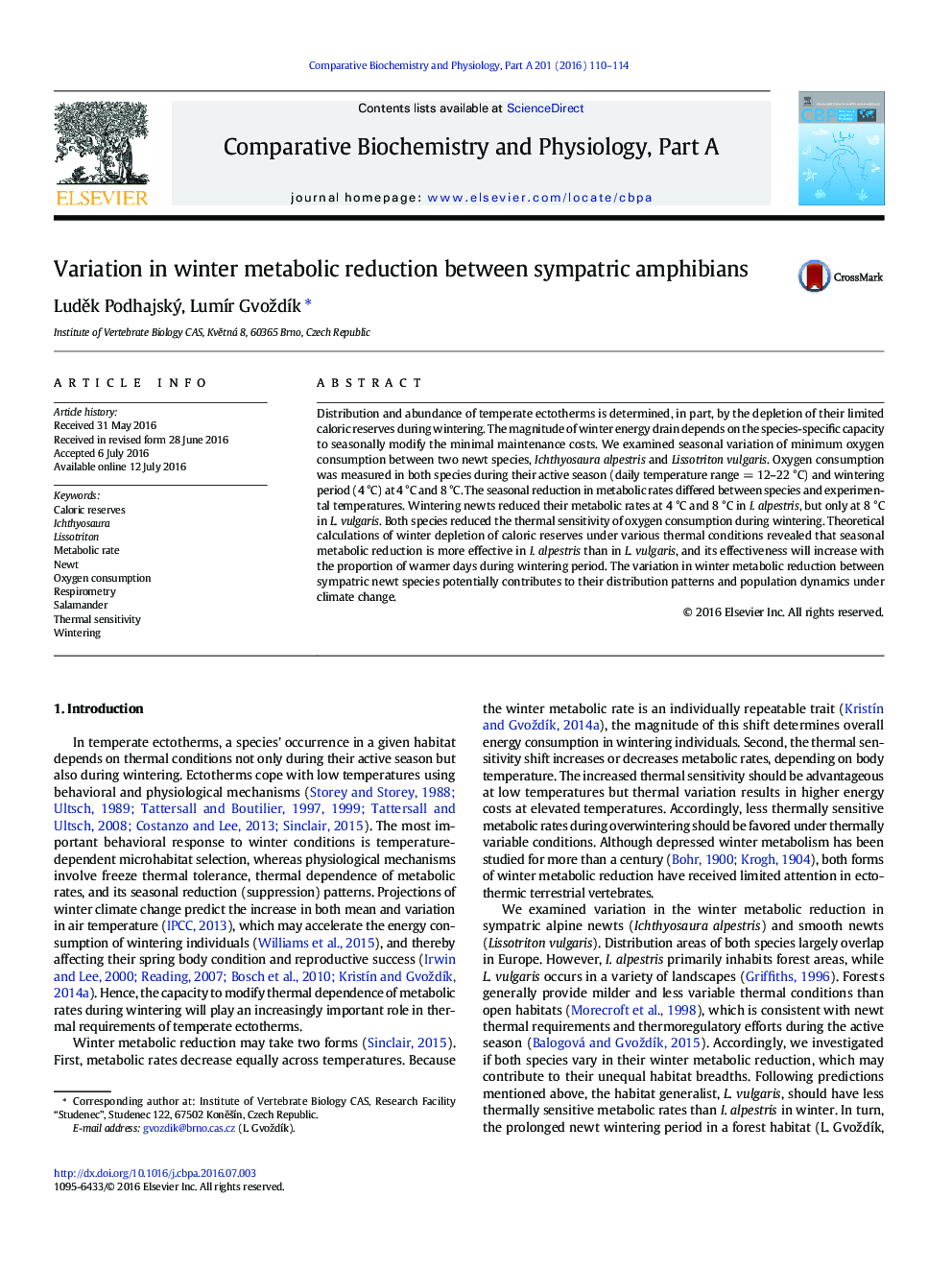| Article ID | Journal | Published Year | Pages | File Type |
|---|---|---|---|---|
| 1971829 | Comparative Biochemistry and Physiology Part A: Molecular & Integrative Physiology | 2016 | 5 Pages |
Distribution and abundance of temperate ectotherms is determined, in part, by the depletion of their limited caloric reserves during wintering. The magnitude of winter energy drain depends on the species-specific capacity to seasonally modify the minimal maintenance costs. We examined seasonal variation of minimum oxygen consumption between two newt species, Ichthyosaura alpestris and Lissotriton vulgaris. Oxygen consumption was measured in both species during their active season (daily temperature range = 12–22 °C) and wintering period (4 °C) at 4 °C and 8 °C. The seasonal reduction in metabolic rates differed between species and experimental temperatures. Wintering newts reduced their metabolic rates at 4 °C and 8 °C in I. alpestris, but only at 8 °C in L. vulgaris. Both species reduced the thermal sensitivity of oxygen consumption during wintering. Theoretical calculations of winter depletion of caloric reserves under various thermal conditions revealed that seasonal metabolic reduction is more effective in I. alpestris than in L. vulgaris, and its effectiveness will increase with the proportion of warmer days during wintering period. The variation in winter metabolic reduction between sympatric newt species potentially contributes to their distribution patterns and population dynamics under climate change.
